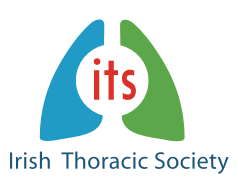WITHDRAWL OF INHALED GLUCOCORTICOIDS AND EXACERBATIONS OF COPD (Magnussen et al, N Engl J Med 2014; 371: 1285-1294)
Link to original journal article
This was a double-blind randomized clinical non-inferiority study compared triple therapy (salmeterol, tiotropium and fluticasone) to salmeterol and tiotropium with the gradual withdrawal of fluticasone. Patients were moderate-severe COPD, 10 or more pack years and at least one exacerbation in the prior year (n=2485). Time to first exacerbation moderate-severe exacerbation was similar in both groups. However, change in FEV1 was significantly worse in the ICS withdrawal group (p<0.001) as was change in the SGRQ (p=0.047); There was also a trend towards more severe exacerbations (p=0.08). There was no significant difference in mortality and pneumonia rate.
Final statement: Withdrawal of ICS lead to a worse change in FEV1 and SQRQ.
SIMVISTATIN FOR THE PREVENTION OF EXACERBATIONS IN MODERATE-TO-SEVERE-COPD (Criner et al, N Engl J Med. 2014: 370:2201-10)
Link to original journal article
This study randomised 885 patients with COPD (GOLD stage 2-4) to simvastatin 40mg/day vs placebo for 1-3 years. The study was terminated early for futility. The rate of exacerbation did not vary between groups. There was also no difference in lung function, quality of life and mortality.
Final statement: Simvastatin had no effect on exacerbation rate.
NON-INVASIVE POSITIVE PRESSURE VENTILATION OF THE TREATMENT OF SEVERE STABLE CHRONIC OBSTRUCTIVE PULMONARY DISEASE: A PROSPECTIVE, MULTICENTRE RANDOMISED, CONTROLLED CLINICAL TRIAL (Kohnlein et al, Lancet Respir Med 2014; 2:698-705)
Link to original journal article
This was an un-blinded RCT of NIPPV in 195 patients with stable, severe COPD with hypercapnia. Patients with severe heart failure, malignancy, unstable angina and severe arrhythmias were excluded. One year all cause mortality was 12% in the NIPPV arm, compared to 33% (p<0.001). There were significant improvements in PaCO2, pH, SaO2, HCO3, FEV1 and quality of life. This difference was not seen in PO2 and 6MWT.
Final statement: NIPPV in severe COPD with hypercapnia lead to reduced mortality and improvements in PaCO2, pH, SaO2, HCO3, FEV1 and Quality of Life.
EFFECTIVENESS OF INTEGRATED DISEASE MANAGEMENT FOR PRIMARY CARE CHRONIC OBSTRUCTIVE PULMONARY DISEASE PATIENTS: RESULTS OF CLUTSER RANDOMISED TRIAL (Kruis et al, BMJ 2014; 349:g5392)
Link to original journal article
This was a cluster RCT with 40 primary care general practices in the Netherlands randomised to a two-year integrated COPD management program. Integrated management education included spirometry interpretation, disease severity assessment, COPD guidelines and motivational interviewing on smoking cessation. Outcomes in this study were assessed by blinded research staff. 1086 patients were recruited. There was no significant change in quality of life. There was a noted improvement in moderate/high activity levels and a measure of care coordination. There was a trend to a higher rate of exacerbations/related hospitalisations in the intervention arm (p=0.09).
Final statement: This study showed no significant effect on quality of life from an integrated COPD management program.
MULTICENTER STUDY COMPARING CASE DEFINITIONS USED TO IDENTIFY PATIENTS WITH CHRONIC OBSTRUCTIVE PULMONARY DISEASE (Prieto-Centurio et al, Am J Respir Crit Care Med. 2014; 190: 989-95)
Link to original journal article
This study looked at current definitions of COPD in the United States.
- ICD-9 codes for chronic airway obstruction, emphysema, chronic bronchitis and bronchitis.
- Patient reported physician diagnosis of COPD, emphysema or chronic bronchitis.
- COPD defined as post-bronchodilator FEV1/FVC ratio <0.70, this is the reference definition for all COPD clinical trials.
Agreement of these definitions was poor Only 57% of patients in group 1 and 61% of patients in group 2 met the criteria for group 3. These patients that didn’t meet the criteria for group 3 tended to be African-American, oh higher educational level, more obese and a higher incidence of diabetes and depression. However, these patients had greater dyspnoea and similar impairment in 6MWT compared to those meeting criteria 3.
Final statement: Many patients in primary care do not meet the basic eligibility criteria for clinical trials of COPD, and maybe results of clinical trials may not apply to them.
ASSOCIATION BETWEEN EMPHYSEMA-LIKE LUNG ON CARDIAC COMPUTED TOMOGRAPHY AND MORTALITY IN PERSONS WITHOUT AIRFLOW OBSTRUCTION: A COHORT STUDY (Oelsner et al, Ann Intern Med. 2014; 161:863-73)
Link to original journal article
This prospective cohort study followed 2965 patients aged 45-84 without airflow limitation for 6 years. Emphysema-like lung was defined by a pre-set algorithm run on cardiac CT scans. A higher level of emphysema was associated with increased mortality (p=0.004), even when adjusting for several confounders (i.e. Cardiovascular risk factors). This association was of greatest magnitude among smokers.
Final statement: Higher levels of emphysema based on cardiac CT was associated with increased mortality.
